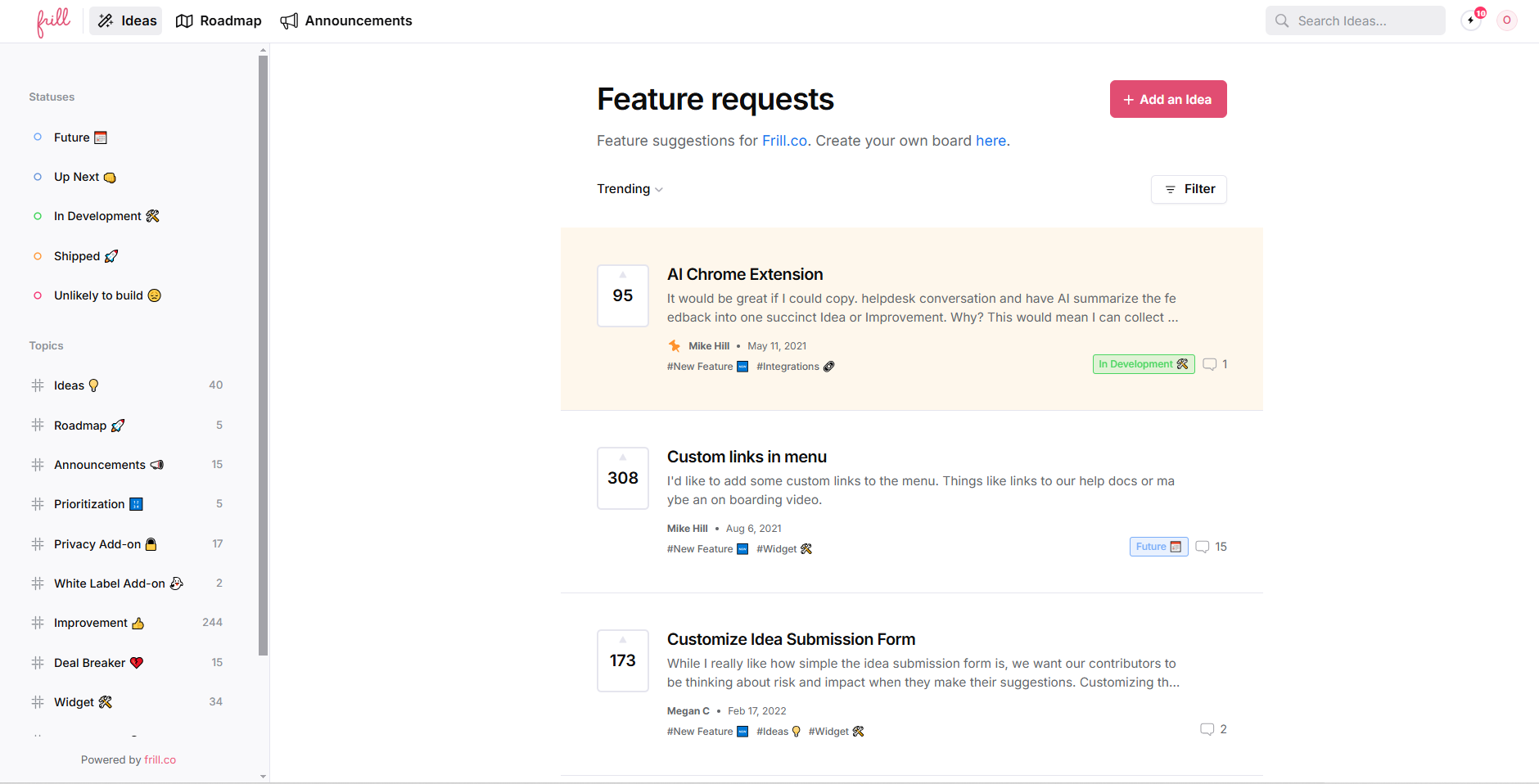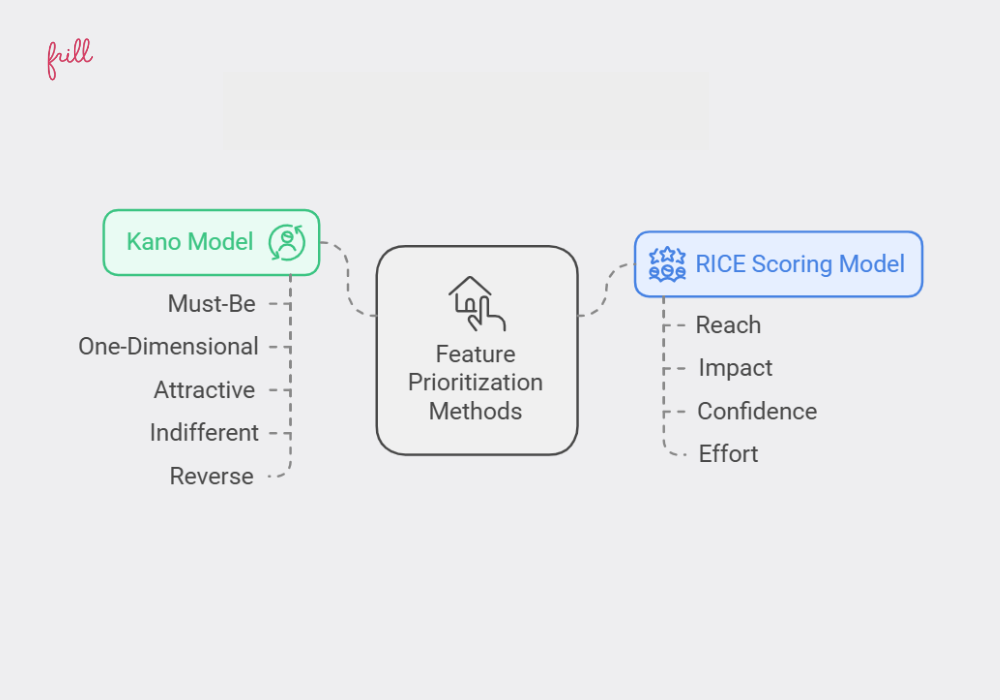Feature Prioritization for Product Managers: A Comprehensive Guide
Last updated on Tue Dec 24 2024
The feature that makes it to the product is usually not the only feature idea product managers begin with. Feature prioritization bridges the gap between these ideas and the chosen feature. Through this process, product managers examine the numerous options for an idea worth investing in. Feature prioritization is too important to be treated with levity, hence the need for a guide. It is key to a product’s improvement.
So, let us flip the page into our guide, exploring how product managers can use feature prioritization to the maximum.
How To Know What and When To Build Features for Your Product
Many factors are involved in selecting the right feature and when to build it. The first ones to consider are your company’s vision and user needs. They are the foundational rods that support your process. Any feature worth building should help meet the vision and be what users want.
Consequently, your team and users must be partners in the feature prioritization process. Using the vision, team members decide the product's “what” and “when.” Users provide feature requests, from which you shape your product roadmap.


Other factors to consider include market trends, the resources at hand, and what competitors are up to. All these and more help you know the right features to build and when to do so.
Why Feature Prioritization Matters
For product managers, feature prioritization is not optional. In fact, it is an understatement to say that it is important. Without it, time and resources would be lost, and making decisions would become harder. Worse, you may build a feature that fails to satisfy the users and aligns with the company.
Feature prioritization has its challenges, and some product managers may want to skip this process. Too many ideas can overwhelm a manager, especially with many good ones. However, feature prioritization is the only way product managers can make informed decisions about the feature.
Who Is a Power User of Your Product?
The power user is crucial to the feature prioritization process and the success of the product as a whole. It involves customers who actively use your product, your major target audience. For example, a music platform’s power users are artists, podcasters, or enthusiastic playlist curators. Power users are interested in advanced features and generally love to give feedback.
Under feature prioritization, give special preference to power users. Because they know the product, they are likelier to make excellent feature requests and easily discover problems.
Of course, power users are not the only voices to listen to. Every user has something to bring. However, the power user is a key player in building features. Once you gather realistic requests, add them to your roadmap.
How To Define Your Goal for the Release?
In any endeavor, priorities are first preceded by a goal. What you want to achieve determines what you consider more important than others. The same principle applies to feature prioritization. You should have a goal for the release before taking up the task of selecting the right feature to build.
However you express your goal, have a problem the feature or product will solve. This goal will guide the release of the new feature. The latter could be geared towards retaining loyal customers and gaining new ones. Your goal should also include increasing user experience.
How To Categorize What Features Your Users Would Need?


To simplify feature prioritization, categorize the feature ideas by order of importance. These categories are derived based on how often users repeat a particular request. The feature with the highest request takes first place, and so on. You don’t have to sort out the requests manually and wound up tired. Make use of tools like Jira to sort the requests.
Organizing the ideas into categories gives you a kickstart for each release period. After organizing them, build the feature with the highest impact. User feedback is crucial here.
How To Know What Features You Should Spend Your Engineering Effort On?
Each feature needs to be vetted before it moves into the hands of the development team; otherwise, you’ll fail to use your engineering resources to the maximum.
Validate feature requests with users who’ve requested them so that you ensure the feature requests are real needs. Ask questions based on the feature’s value, whether it can solve the problem, and its uniqueness. These questions will tell you how impactful each feature is, and in that way, it will save engineering time by focusing on what is needed.
What is Affinity Grouping, and How Does It Help Prioritize?
Affinity grouping happens when product managers meet with their team to rank the features in order of importance. During this phase, all involved participants decide which feature is worth building. They achieve this by clustering similar ideas from the feature request tool. This allows them to select what fits market trends and what more users will embrace.
Start your affinity grouping by meeting the UI/UX designers. Together with the designers, you ascertain which feature requests meet user needs. Another action to take in the affinity grouping phase is to transform feature roadmaps into prototypes. The prototypes provide an initial, practical outlook of how the finished features will look. Do these, and you will not move blindly into feature building.
How To Identify the Complexity of the Feature Before Planning for a Production Release?
Feature complexity involves all the hurdles to cross when a feature is included in a product. These hurdles can appear at different levels, from implementation to use to maintenance. Knowing the potential complexities of any feature you want to prioritize is advisable before taking a decisive step. The feature you build should have the least amount of complexity.
To identify the complexity, work through product discovery together with stakeholders from different departments. These stakeholders will contribute their different views, which helps mitigate biases.
Prominent Prioritization Methods You Should Know

Many prominent prioritization models act as a guide in feature prioritization, making sure you land on the right one. Here are some prioritization methods:
The RICE Scoring Model
The acronym RICE stands for Reach, Impact, Confidence, and Effort. Intercom developed this model to be a tool for feature prioritization, and it has been so for some time. The RICE model chooses the best feature to prioritize based on four factors, as seen in the acronym.
Reach considers how many people the feature will get to. Impact explores the effect on the people reached. Confidence examines your assurance about the reach and impact of a feature, and Effort shows what work is necessary for the feature to come to life.
The Kano Model
The Kano Model is also a tool for feature prioritization focused on increasing customer satisfaction. Thus, customer satisfaction is both the focus and the main factor for prioritizing a feature. Kano Model sees a feature as important to the degree that it satisfies customers.
Features are classified under five categories. The last category is for the dissatisfied and unsatisfied, those that customers will neglect. At the other end of the spectrum is “excellent” for features that customers delight in.
How To Communicate Clearly About the Context of a Feature Request With the Team
A bulk of your job as a product manager involves clear communication with your team. Under feature prioritization, the product manager must explain the context of the feature request. Users and other stakeholders make feature requests for good reasons, which forms the context. Perhaps they found it difficult to navigate the app, or they noticed your product seems outdated compared to competitors. Whatever the context was, the team must know.
We emphasize that communication must be clear. Ensure you tackle details about the feature, the context, any bug fixes, and other information they should know.
What Is Product Roadmapping?

There is a strong connection between feature prioritization and product roadmapping. A product roadmap is a guide that leads you toward the goal of a finished product. It plays the role of a map for a journey, hence the fitting name. The product roadmap covers why the product is needed, what it should be used for, and how it should be used, among other information.
With a product roadmap, you can ensure the feature you build aligns with your strategy. It also helps keep the focus on users and is useful when allocating resources.
When and How To Plan the Launch?
Risks are still possible even after choosing the right feature idea to build. Therefore, release the entire product or update in phases rather than at once. This systematic process allows for changes where necessary, but it needs careful planning. A major part is knowing when and how to launch. It should be timely, reaching the public exactly when they need it.
Start with the simplest feature of the product or update and measure its performance. You release more features from there until the entire product or update is out. This is known as the MVP strategy to launch features that are in demand and can be iteratively improved based on feedback.
Release Notes
One final, necessary tool in your product development arsenal is the release note, a bridge between the business and its customers. Through release notes, the business shares information with users, showing that the latter's feedback is important.
Release notes keep users engaged and a part of the process, which improves their overall impression of the business. It also increases customer retention.
Conclusion
With so many useful feature ideas on your list, feature prioritization remains your safety net, preserving you from wasting time and resources on the wrong feature. Our combined list of tips, methods and tools are all meant for businesses to release updates that leave users satisfied.